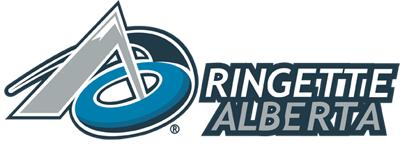Children
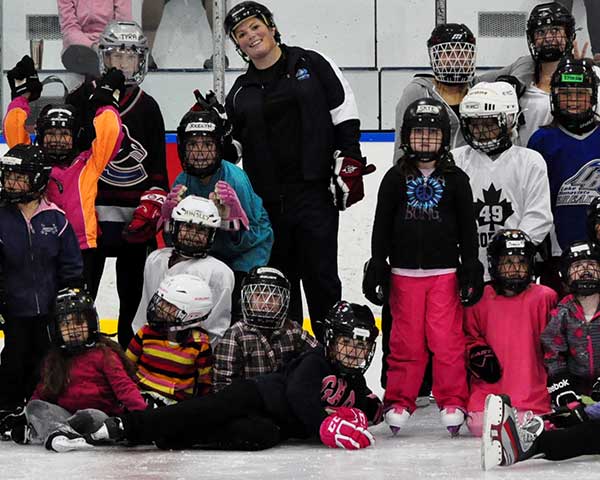
Children’s Ringette includes Active Start, U10 and U12. The focus throughout Children’s Ringette is on fun and maximum participation.
For Active Start and some of U10, play will occur on a smaller surface (cross-ice or half-ice) with appropriately sized nets to allow each player more ring time and opportunities to hone ring control, passing and shooting skills, as well as fundamental skating skills.
- Active Start will play 3 vs 3 plus goalies, cross-ice games, when games are played. Note: Ringette Alberta does not recommend games at Active Start.
- U10 Step 1 will play 3 vs 3 plus goalies, half-ice games
- U10 Step 2 will play 3 vs 3 plus goalies, half-ice games
- U10 Step 3 and U12 will remain on full ice
- Officials will not be used for U10 Step 1 and Step 2 games.
Children’s Ringette Report
Prepared by Tim Berrett (PhD) and submitted to Ringette Alberta, this report assesses the current (2019-20) and proposed implementation of Children’s Ringette Programming in the province of Alberta.
Webinar Recording
A webinar was held on May 5th, 2020. There was a problem with the recording, but an audio-only version is available at the link below.
Come along as we talk with Finnish parents about the Childen’s game there and ask them what advice they’d like to share with Canadian parents.
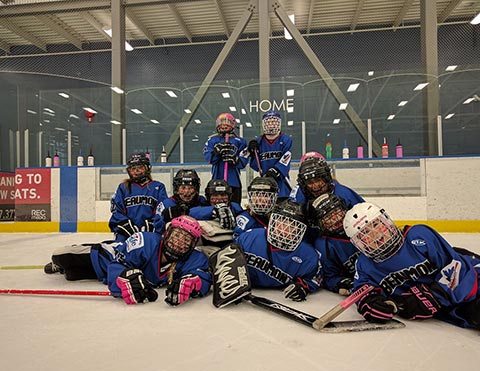
Active Start & U10 Step 1 & 2 Game and Season Structure
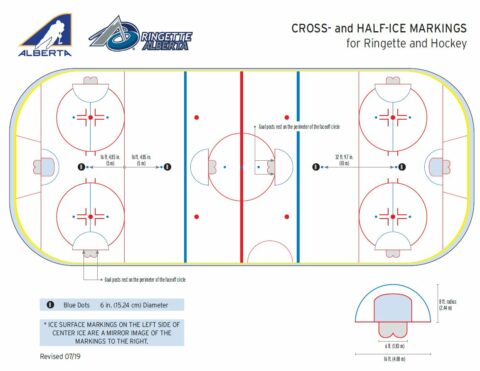
Ice Diagrams
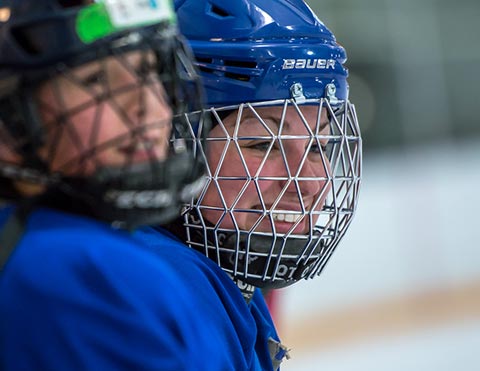
Messaging to facilities from Hockey Alberta and Ringette Alberta
Ringette Alberta and Hockey Alberta worked together to produce a joint message to our members and facilities. Click to view or download the memo.
Children’s Ringette Today – Why Change?
Ringette in Canada is generally organized around the structure of the adult game, using only chronological age as a guide for athlete grouping, and then placing athletes onto teams following evaluations. These teams then practice and participate in league play and tournaments throughout the season.
Although Ringette Canada’s LTAD Framework recommends appropriate training and competition for children, the competitions continue to be based on the adult game.
Children’s Ringette in the Future
Doing our best for children, and setting them up for future success, means creating a system of training and competition designed specifically for them.
This means grouping children by stage using resources like the Ringette Essentials, rather than sticking to rigid chronological age groups.
Doing the right thing also means games will be cross-ice, half-ice or full-ice, based on the progress of the players, so the game fits them rather than them having to fit into the adult game.
Research
A growing body of research supports small-sided games in a variety of sports. Advantages of small-sided games are seen across age groups and cultures. Here are a few examples of those studies:
Caso & Vandercamp (2020) showed that small-sided games (played with a smaller number of players on a smaller pitch with adapted rules) resulted in more variability and creativity in the actions (e.g., passes) of elite soccer players.
Marton H. (2020) compared ice hockey fundamental technical skills in cross-ice 3v3 games in comparison to a 5v5 game.
Katis, A. & Kellis, E. (2009) examined how small-sided games affected physical conditioning and performance in young soccer players.
Frequently Asked Questions
Big Picture
What’s changing in Children’s Ringette?
Players will learn the fundamentals of the sport on a smaller surface that reflects their size (cross-ice or half-ice). Active Start are playing cross-ice games, while U10 Step 1 and Step 2 is playing half-ice games. U10 Step 3 are unchanged for the 2020/21 season.
This change will allows each player more ring time and opportunities to hone ring control, passing and shooting skills, as well as fundamental skating skills, before layering on more complex elements of the game. Players are able to develop at their own pace in a safe environment where the focus is on fun and maximum participation.
Active Start, U10, and U12 are included in Children’s Ringette. The U12 participants play on full ice and conclude their season with a regional/league championship. View a detailed description of Children’s ringette here.
Will players in Children’s Ringette still get to play games?
Yes! Competition is why people participate in sport. The design of the competition (modified playing surface, modified rules) has changed, but the competition is staying.
How did you decide which children will play on which size of ice surface?
The proper time to progress to a larger ice surface is actually unique for each person however, for practical reasons, and until we have a more flexible system of athlete placement, we have to pick a time to make the change and apply that to an entire group.
We have introduced a smaller ice surface for the youngest participants—starting with Active Start (cross-ice) and U10 Step 1 (half-ice)—in the 2019-20 season.
We have observed a very successful progression of cross ice to half ice to full ice in use in Finland where they have been using this approach for 25 years. Finland’s closest equivalent to our Active Start plays play cross-ice and their closest equivalent to our U10s play on half ice.
What do we do if a player is further ahead or behind the rest of the kids their age? Aren’t we using age to group participants?
Ultimately, the plan is to eliminate age groups below U12 and only rely on the Athlete Development Matrix (which looks at more than just ringette skill) to group like with like. Realistically, this is 4-5 years away. In the mean time, everyone should be willing to allow a player to participate in a group that is the best fit for her which includes ringette skills but other non-ringette factors as well, regardless of her birthdate. Remember: the U10 ‘Step’ program was designed to consider age as one factor in grouping children; it does not mean all 6-7 year olds need to play Step 1. If a 7 year old is ready for Step 2, they should be grouped with similarly skilled peers.
Is Ringette Alberta doing this because hockey is implementing similar changes?
No. Hockey is implementing small area games but this has been the plan since Ringette Canada released its Long-Term Athlete Development model in May 2009.
Hockey isn’t likely the best comparison to ringette anyway. Instead, the better comparison is ringette in Finland where they have been using smaller nets and smaller ice surfaces for 25 years with great results.
Should the local associations be purchasing rink dividers?
This is up to your local association. If associations already own dividers, have access to them through a partnership with their hockey counterparts, or their municipality provides them, they should use them. However, rink dividers are not mandatory. Games can be safely played without them.
With games being played on a smaller ice surface, will fees be reduced?
A fee change based solely on a shift to smaller area games is not warranted.
The small area game is superior for development at this stage, with more quality time on the things that matter most (skating, passing, receiving, shooting).
In many associations, fees for Active Start and U10 are subsidized to make the transition into ringette easier. A deeper subsidy should not be expected.
There are guidelines and specifics produced by Ringette Canada that differ from these Ringette Alberta guidelines. Which ones should we be following?
Please follow the Ringette Alberta information.
Logistics
What is the ideal team size?
10 is the ideal number of players for three reasons:
- The game is 3 vs 3 plus goalies. A roster of 10 is ideal as three lines of 3 is really easy to manage.
- With 3 lines of three and 90 second shifts, it is just the right balance between sufficient playing time and time to rest.
- 10 per team is also ideal as it helps keep the number of people in a dressing room.
Do we have to share dressing rooms with the other teams?
In some cases, yes. There could be 4 teams playing on the ice surface at once. We know sharing dressing rooms is not ideal, however we are at the mercy of the physical space the arenas can provide. We will not abandon doing the right thing on the ice to make dressing rooms more comfortable.
One of the reasons that Ringette Alberta recommended 10 as the ideal team size, in addition to it being the sweet spot for ice time per player, is to help limit the number of people in the dressing room at the same time.
Some ideas to consider to make the dressing rooms more functional:
- Limiting the number of parents in the dressing room at one time
- Doing “pre-game talks” on the bench or on the ice
- Getting most of your child’s equipment on at home
But we need our own dressing room for team bonding and pre-game talks!
Teams at this stage do not need private pre-game strategy talks in the dressing room.
Making friends and bonding as a team can happen in the dressing room during practice, in off ice team activities, between smaller groups of 1-3 in the dressing room prior to and after games and so on.
We’re also not going to forgo doing the right thing on the ice to support the notion that team bonding can only take place in dressing rooms in advance of games.
If associations feel that they must have only their own team in one dressing room with no others, Ringette Alberta suggests the option of forming a team of 20 and playing two games at the same time; half the team at one end of the ice playing an opponent and the other half playing at the other end of the ice.
Who sets up the markings on the ice?
Coaches are to set up the ice and add any necessary markings. These may be made with paint or markers, depending on what is available and permitted at a given facility. Coaches are expected to have the appropriate materials.
View the ice diagram here:
Game Play and Format
How long is a game supposed to be?
Game times are flexible within the one-hour ice slot. I.e your ice time may be an hour, but actual game time may vary slightly. Contact your local league for specifics in your area.
How long are shifts?
There is a buzzer every 90 seconds to indicate a shift change. The game clock does not stop (run time).
What are the ice markings we’re supposed to use?
For cross-ice:
- creases
- “starting dot”
For half-ice:
- creases
- “starting dot”
- the free play line from full ice games; this is used to mimic the blue line and players must pass to a teammate over this line.
Where can I find an ice markings diagram?
Click here to view or download the ice markings diagram.
Key Aspects of the cross-ice and half-ice game
Key Aspects of Cross-ice and Half-ice games:
- Two games will be happening on one ice surface, four teams playing. OR one game and one practice at the same time.
- Coaches are to set up the ice, and add any necessary markings, enforce general game rules.
- RAB recommends coaches be on the ice all year.
- The game is 3v3, plus goalies
- Run time with 90 second buzzer
- 5 min set-up/warm up time
- Black Gold League: 27 minute periods, 1 minute half time (for hour ice slots)
- For other leagues or if you are unsure, contact your assignor
- Game sheet is for recording players and coaches (rosters), but no goals/penalties to be recorded
- Half-ice games have a “blue line” to pass over (ringette line/free play line)
- No officials
Penalties/Infractions
- Treat penalties as infractions; blow down the play, teach the player what they did wrong
- No one goes to the penalty box, nothing is recorded on game sheet
- Resume play by free pass from the “starting dot” or a goalie ring for the team that didn’t commit the penalty/infraction.
Crease violations, stick violations
- Either blow down immediately, or 5-second count
- Teach player what they did wrong, resume from “starting dot” or goalie ring.
Buzzer
- While the players are rushing off, the coach retrieves the ring. There are NO ring races to restart play. The Official/Coach lets athletes get oriented for a fair start and gives the ring to the last team with possession, or to the team that was last scored upon. Using this free pass will get the players ready for when they will be doing this without buzzers in later years.
